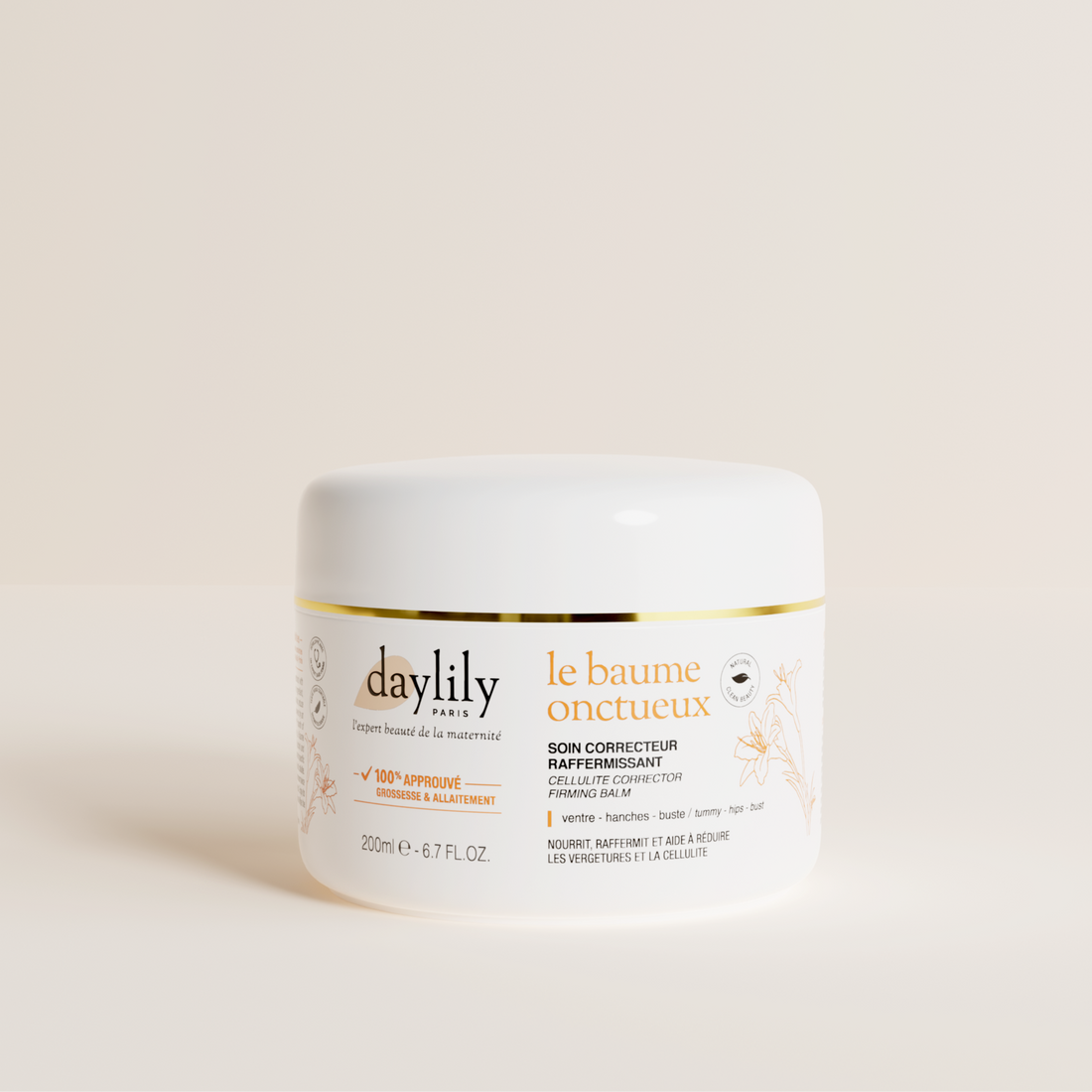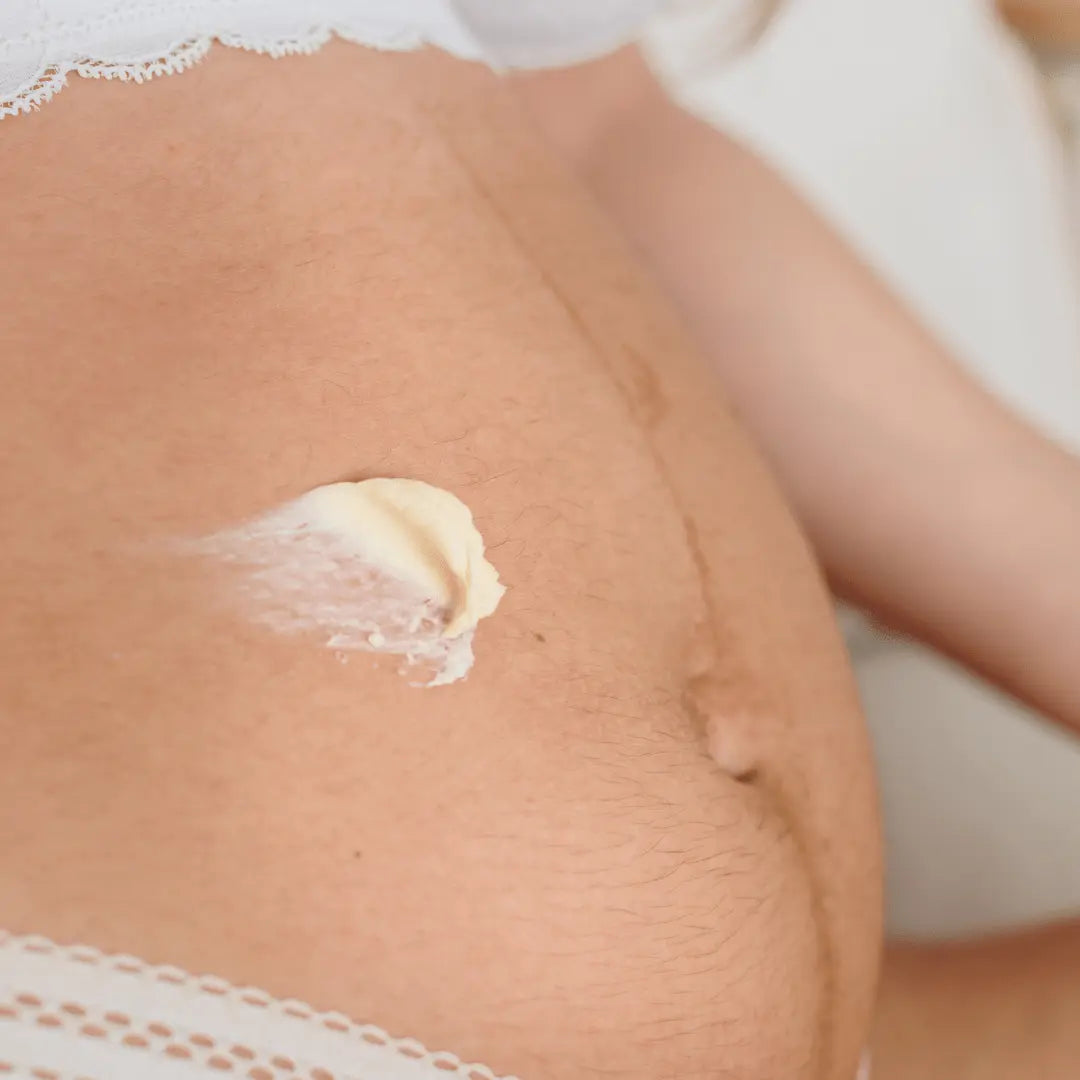Daylily Paris is a brand of clean, sensory and effective skincare products, made in France and 100% compatible with pregnancy and breastfeeding. We are also committed to sharing quality information for informed and uninhibited motherhood. 🧡


- Regular price
-
33,90 € - Regular price
-
- Sale price
-
33,90 €


- Regular price
-
24,90 € - Regular price
-
- Sale price
-
24,90 €


- Regular price
-
19,90 € - Regular price
-
- Sale price
-
19,90 €
- When to start dietary diversification?
- How to start diversifying?
- Tips to facilitate dietary diversification
When to start dietary diversification?
In his first months of life, baby only consumes milk, whether it is breast milk or first-age milk. It is a complete food that provides it with all the nutrients it needs and will help it grow well.
You should know that breastfed children have already experienced many flavors, since breast milk takes on the taste of what you eat. This is a good reason to take care of your postpartum diet ! Bottle-fed babies, for their part, only know the flavor of infant milk, which remains linear throughout the meals.
From 4 months, it is possible to start diversification, in agreement with your pediatrician, who will provide you with valuable advice. Dietary diversification should begin between 4 months and 6 months at the latest. It is a completely personal choice, which will be made according to your desires, your organization, and the baby's behavior: some babies, from 4 months old, already show a certain attraction to your plate and make you understand that they are ready to eat solid food, when others remain very attached to their bottles or their feedings!
How to start diversifying?
The ideal is to start with vegetable purees, for lunch: choose a single vegetable to introduce the particular taste of each food to baby, the mixtures can be given later. Some pediatricians advise starting with green vegetables, the most “bland”, and then moving towards the sweetest (carrots, peas, sweet potatoes, etc.), which are often more successful with our little gourmets. Other pediatricians may advise the opposite. The main thing is to have the baby tested vegetable after vegetable (this also helps to check that there is no allergy).
At the beginning, your child will only consume a small quantity of puree : congratulate him, a few teaspoons is already very good! Don't force it and gradually increase the quantities over meals to reach half a pot, then a full pot.
Small pot purchased or homemade: it's up to you to choose or mix the two depending on your obligations and the time you have. The little jars for children meet their nutritional needs, their texture is 100% adapted to baby's age and it must be said that they are very practical when you are short on time.
If you prefer to cook and concoct recipes for babies using fresh produce, don't forget to add fat, for example rapeseed oil, its balanced contribution between Omega 3 and Omega 6 makes it a natural oil. reference for a young child. Up to 12 months you can add one teaspoon of raw oil in vegetables (1), two beyond 12 months. Do not add salt: on the one hand, baby's kidneys have difficulty eliminating it, on the other hand, he will be able to concentrate on the real taste of food. If certain dishes seem bland to you, remember that your baby does not have the same palate as you, and that all these culinary discoveries represent an explosion of flavors for him!
You can also offer applesauce or other fruits for a snack, which are often very popular, and add infant cereals to the evening bottle. At four months, gluten-free cereals are recommended (rice, millet, quinoa, etc.), wheat and gluten can be introduced from 6 months, always with the agreement of your pediatrician. It is also around 6 months that the discovery of new flavors continues: baby's diet changes with the introduction of proteins (meat, fish, eggs, up to 10 g per day at lunch) and starchy foods. like the potato.
Biscuits and bread croutons can be offered between 6 and 9 months (when you feel that baby is ready to chew). It is also around 9 months that it is recommended to offer pieces that your little one will eat with their fingers (2).

Perhaps you will opt for DME (Child-Led Diversification), which involves introducing pieces earlier. The child will then grab the food himself and bring it to his mouth, without constraints and without introducing purees beforehand. It is quite common, especially at the start of the application of DME, for babies to regurgitate the foods they try and this is normal: not all foods are yet adapted to their body. Stay patient, do not force your baby and always stay by his side to avoid the risk of suffocation. If you opt for DME, it is not recommended to apply classic food diversification in parallel (introduction of foods reduced to a smooth puree, then pieces, etc.). Some see in DME the opportunity for the baby to discover his limits , to test new flavors, without transformations, to develop his motor skills ... If this practice has been on the rise in recent years, some health professionals are using it. advise against (4). In fact, DME is not suitable for all children; for example, this method should be avoided if the baby does not have good motor and sensory development. Do not hesitate to speak to your healthcare professional who will be able to advise you on this process.
Even if your baby starts to eat like an adult, continuing to give him milk (infant or breast milk) remains very important for his good development. Between 6 and 12 months, he must continue to consume between 500 and 800 ml of milk or dairy products per day (3), at breakfast, in the evening or in addition to snacks... 2nd age milk contains essential vitamins and minerals for baby's growth, while maintaining low protein levels. Classic cow's milk, which you buy in a bottle for example, is not suitable for a baby : it contains too much protein and mineral salts which can overload his kidneys.
Tips to facilitate dietary diversification
A good tip to prepare for diversification in advance is to let your baby handle his spoon : he will be able to put it in his mouth, get used to this new texture and it will be better accepted the day you present it to him filled with puree. Note that before handling his spoon, baby may be tempted to want to use his hands to grab his food.
It can be quite frustrating to cook your baby's meal...and see him reject everything all together! To limit waste, you can freeze small portions of puree (for example in the form of cubes in ice cube trays) and defrost them in a dropper, depending on your little one's appetite. Appetite may vary depending on the babies, the days, the condition of the little ones, don't put pressure on yourself with meals.

Baby refuses the food you offer him? Don't panic, you should know that a food must be represented up to 12 times for a child to accept it. So continue to regularly present him with the rejected fruit or vegetable, in a calm atmosphere, without offering him only the dishes for which he has shown a certain appetite. And yes, dietary diversification is also a matter of patience !
Source :
(1) https://www.mpedia.fr/news-huile-allergy/
(2) https://www.mpedia.fr/art-diversification-alimentaire-6-12-mois/#:~:text=Alle%20les%20viandes%20sont%20conseill%C3%A9es, cependant%20pas%20la %20best%20meat)
(3) https://www.mpedia.fr/art-diversification-alimentaire-6-12-mois/
(4) https://www.mpedia.fr/art-dme-nouveau-mode-diversification/













